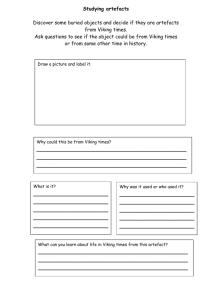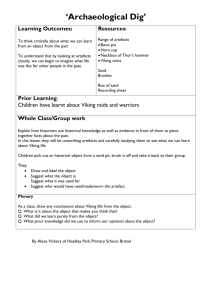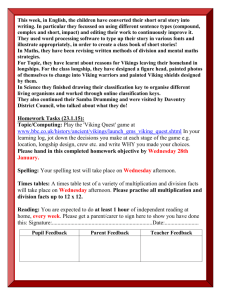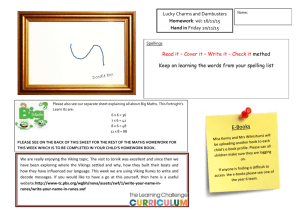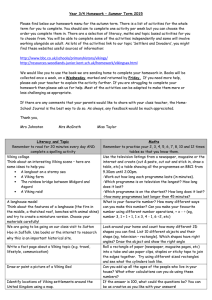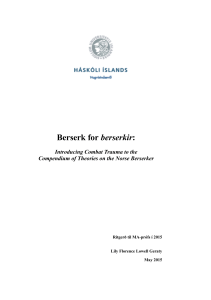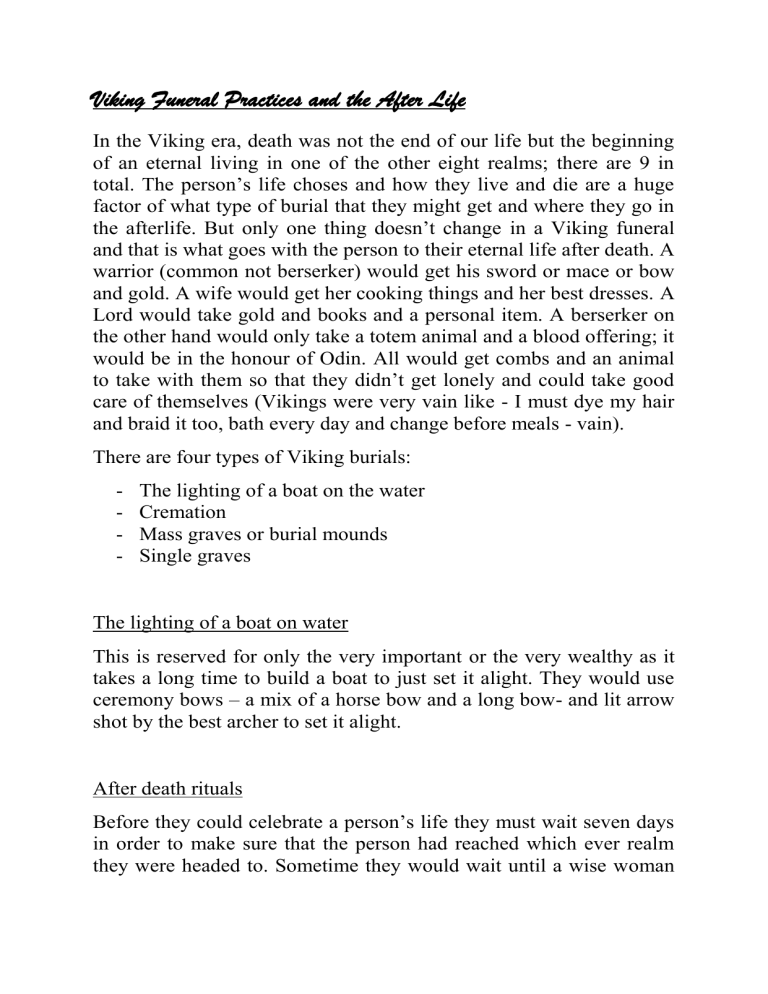
Viking Funeral Practices and the After Life In the Viking era, death was not the end of our life but the beginning of an eternal living in one of the other eight realms; there are 9 in total. The person’s life choses and how they live and die are a huge factor of what type of burial that they might get and where they go in the afterlife. But only one thing doesn’t change in a Viking funeral and that is what goes with the person to their eternal life after death. A warrior (common not berserker) would get his sword or mace or bow and gold. A wife would get her cooking things and her best dresses. A Lord would take gold and books and a personal item. A berserker on the other hand would only take a totem animal and a blood offering; it would be in the honour of Odin. All would get combs and an animal to take with them so that they didn’t get lonely and could take good care of themselves (Vikings were very vain like - I must dye my hair and braid it too, bath every day and change before meals - vain). There are four types of Viking burials: - The lighting of a boat on the water Cremation Mass graves or burial mounds Single graves The lighting of a boat on water This is reserved for only the very important or the very wealthy as it takes a long time to build a boat to just set it alight. They would use ceremony bows – a mix of a horse bow and a long bow- and lit arrow shot by the best archer to set it alight. After death rituals Before they could celebrate a person’s life they must wait seven days in order to make sure that the person had reached which ever realm they were headed to. Sometime they would wait until a wise woman had passed through the tribe before celebrating. This could take up to a year.
